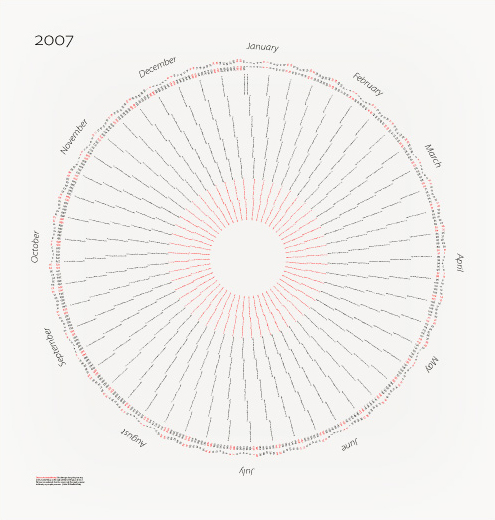

Bracket trips along the perimeter, circle your birthday, arc through weekly meetings, mark time. Plan less on weekends. Invent a visual code: this graph acquires its life only as you plot your own.
The visual/cultural resonances with ancient native American calendars, mandalas, antique engravings of the solar system; the red weekends at the bright center and the wavy outer corona all have been turned to directly support the calendar’s use as a tool. It contextualizes every hour, even on a year’s time scale: if someone marks the calendar, then looks back in even as little as an hour, they will be able to see time’s inexorable march. You may print one gratis for personal use, or you may get masterfully offset printed ones in exchange for a donation at Information Esthetics.
The calendar was designed by W. Bradford Paley, Director of Information Esthetics. Mr. Paley’s work has received recognition in ID magazine and the New York Times, numerous art and design awards including grants from the New York Foundation for the Arts and New York State Council on the Arts, and grand prize in the prestigious Japan Media Arts Festival. His work has been exhibited in the Museum of Modern Art and the Whitney Museum of American Art. He was recently nominated for the Rome Prize of the American Academy in Rome, and has just finished redesigning interfaces for the trading systems on the floor of the New York Stock Exchange.























